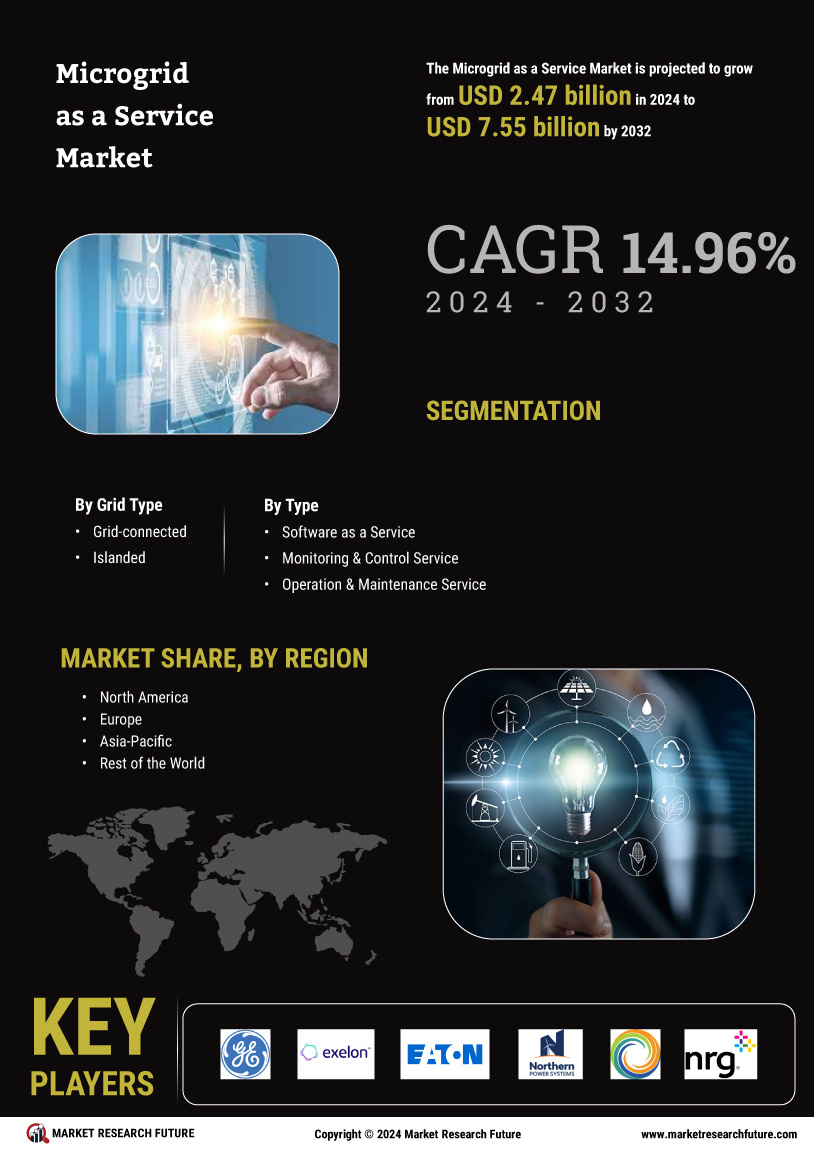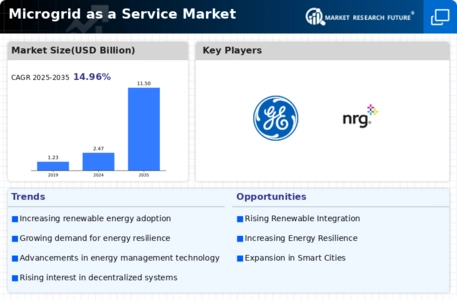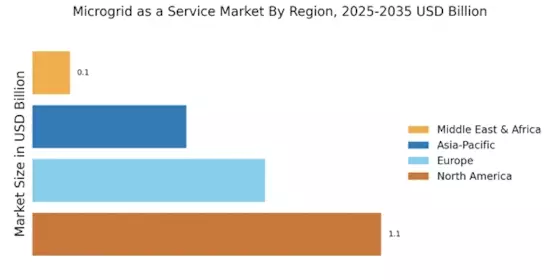Rising Energy Costs
The escalating costs of traditional energy sources are propelling the Microgrid as a Service Market forward. As consumers and businesses face increasing electricity bills, there is a growing inclination towards alternative energy solutions. Microgrids offer a cost-effective means of energy generation and distribution, potentially reducing reliance on expensive grid electricity. According to recent data, energy prices have surged by approximately 20% over the past five years, prompting stakeholders to explore microgrid solutions. This trend indicates a shift in energy consumption patterns, where the Microgrid as a Service Market is positioned to capitalize on the demand for more affordable and sustainable energy options.
Technological Innovations
Technological advancements are a key driver of the Microgrid as a Service Market. Innovations in energy storage, smart grid technologies, and IoT applications are enhancing the efficiency and reliability of microgrids. These technologies enable real-time monitoring and management of energy resources, optimizing performance and reducing operational costs. The market is witnessing a surge in the adoption of advanced energy management systems, which are projected to grow at a rate of 12% annually. This technological evolution not only improves the functionality of microgrids but also positions the Microgrid as a Service Market as a leader in the transition towards smarter energy solutions.
Decentralization of Energy Systems
The trend towards decentralization in energy systems is significantly influencing the Microgrid as a Service Market. As energy generation shifts from centralized power plants to localized sources, microgrids emerge as a viable solution for communities and businesses. This decentralization allows for enhanced energy security and reliability, as microgrids can operate independently or in conjunction with the main grid. The market for microgrid services is projected to grow, with estimates suggesting a compound annual growth rate of over 15% in the coming years. This shift towards decentralized energy systems underscores the potential of the Microgrid as a Service Market to meet the evolving needs of energy consumers.
Government Incentives and Policies
Supportive government policies and incentives are significantly impacting the Microgrid as a Service Market. Many governments are implementing regulations and financial incentives to promote the adoption of microgrid technologies. These initiatives aim to enhance energy resilience, reduce greenhouse gas emissions, and stimulate economic growth. For instance, various regions have introduced tax credits and grants for microgrid projects, which can lower the initial investment barrier for stakeholders. This regulatory support is expected to drive market growth, with projections indicating that the Microgrid as a Service Market could see an increase in project approvals by over 25% in the next few years.
Environmental Sustainability Initiatives
Increasing awareness of environmental issues is driving the Microgrid as a Service Market. Governments and organizations are prioritizing sustainability, leading to investments in renewable energy sources and microgrid technologies. The integration of solar, wind, and other renewable resources into microgrids aligns with global sustainability goals. Recent reports indicate that renewable energy sources accounted for nearly 30% of total electricity generation in several regions, highlighting a significant shift towards cleaner energy. This trend not only supports environmental objectives but also enhances the appeal of the Microgrid as a Service Market, as stakeholders seek to reduce their carbon footprints.


















Leave a Comment